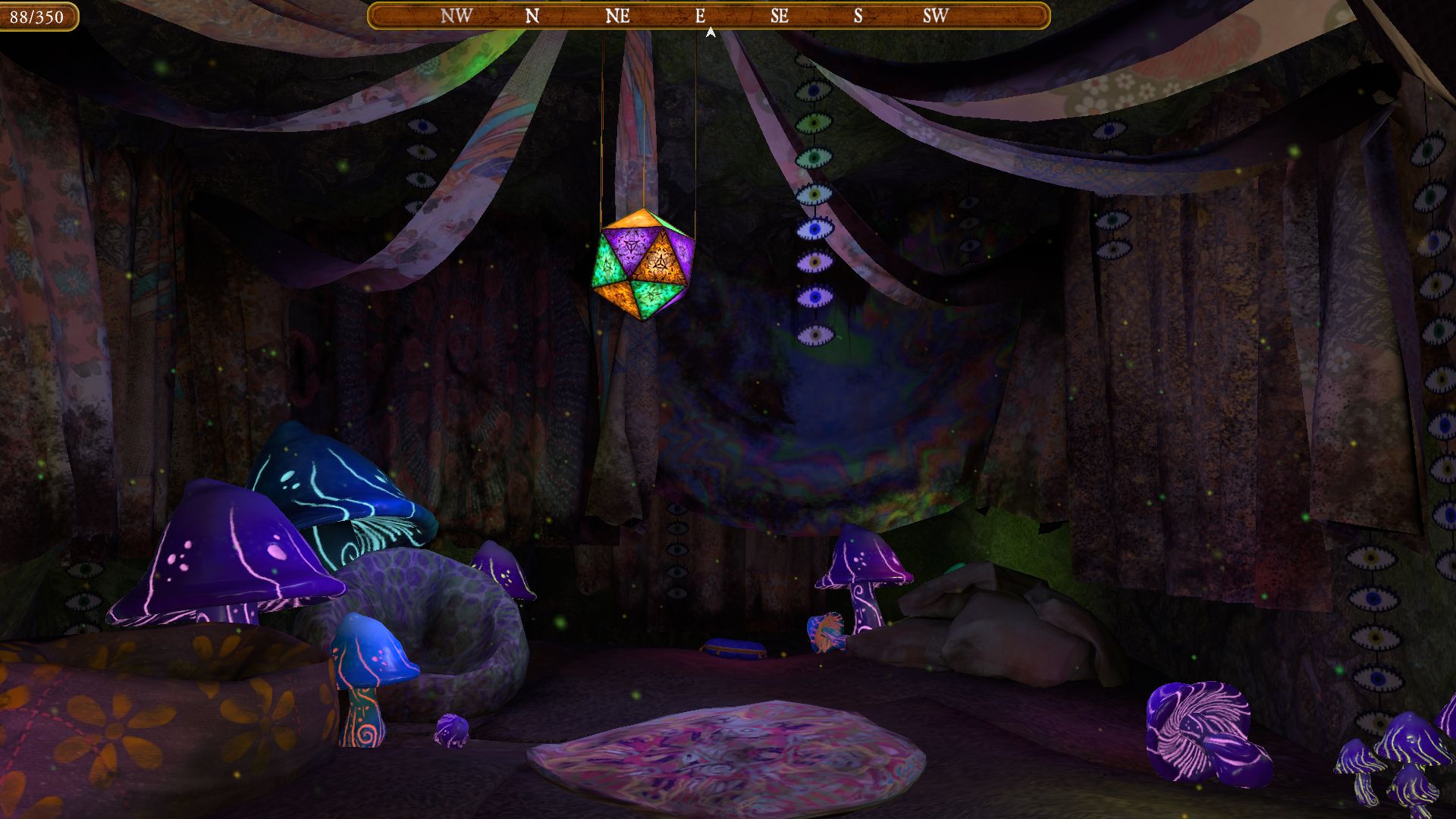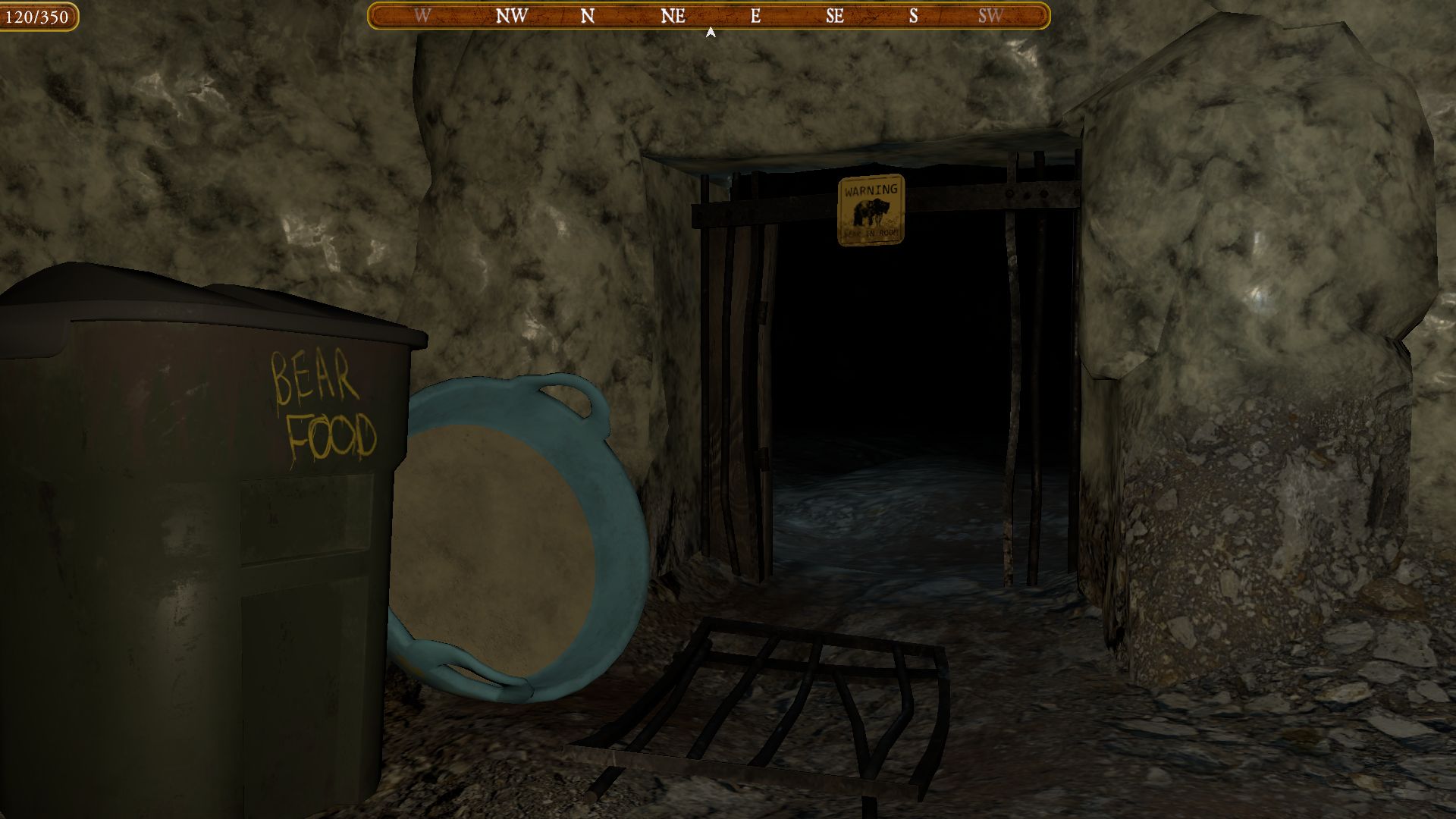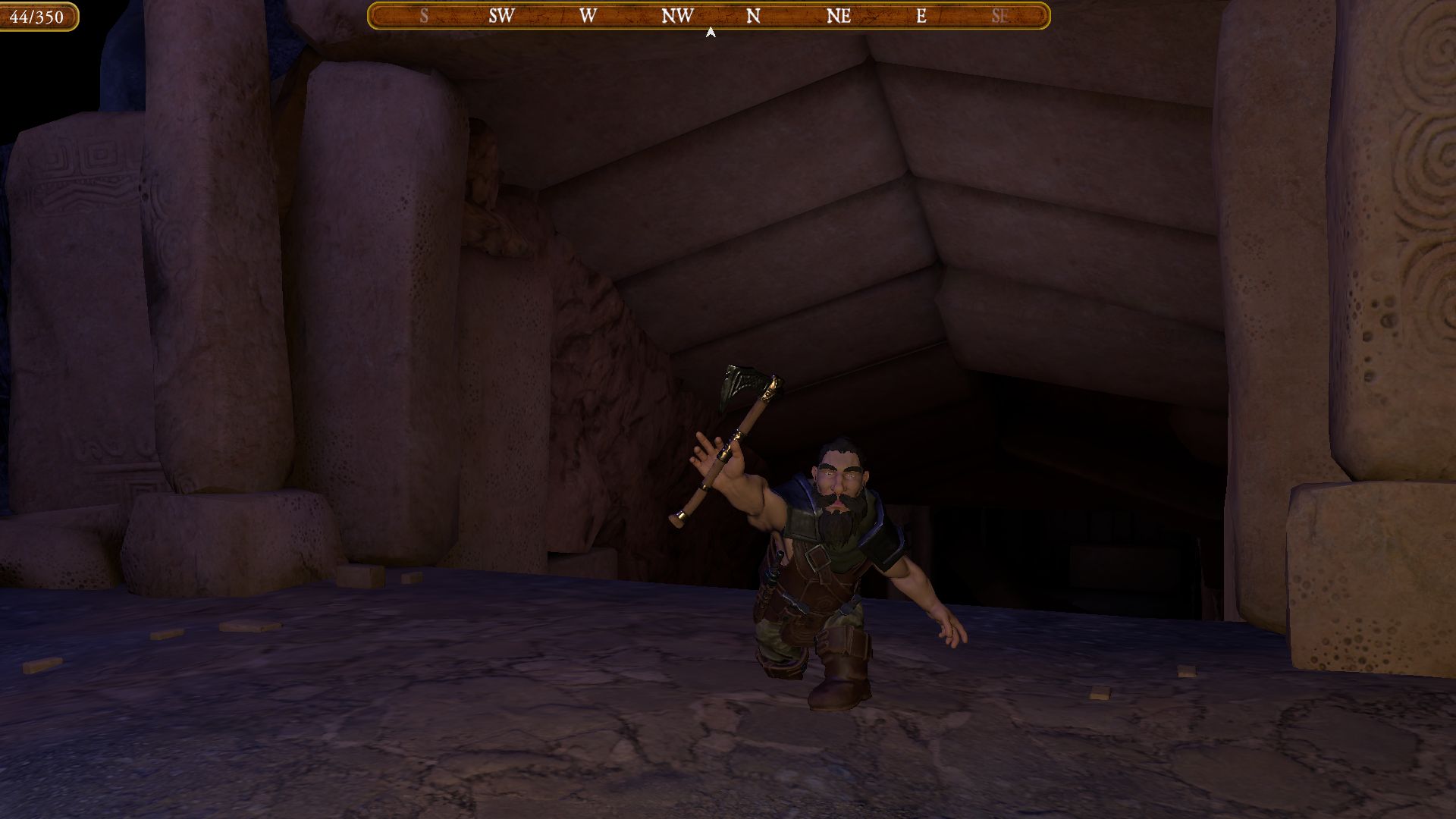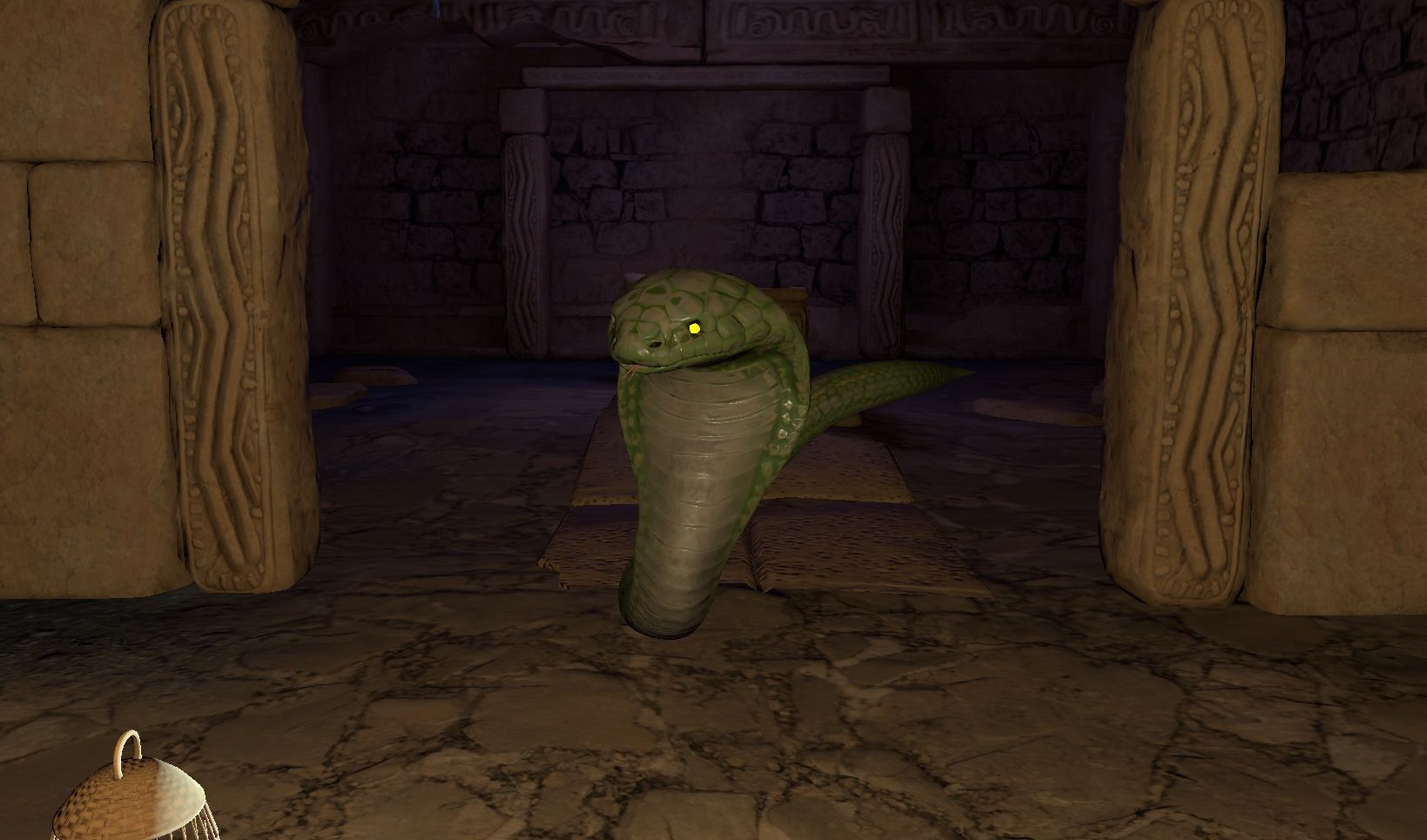Our Verdict
Only for nostalgists and those who love getting lost on spelunking holidays.
PC Gamer's got your back
What is it? A slavish graphical remake of a classic ‘70s text adventure.
Expect to pay: $39.99
Release date: January 19, 2023
Developer: Cygnus Entertainment
Publisher: Cygnus Entertainment
Reviewed on: Windows 10, AMD Ryzen 5 5600X Six Core CPU, 16GB RAM, Nvidia Geforce RTX 3060
Multiplayer? No
Link: Official site
Every child who falls in love with a fantasy novel dreams of its big-screen adaptation—the perfect cast, a goosebump-inducing score, and 40-foot dragons plastered across an IMAX screen. But every adult who has seen that monkey’s paw curl knows the cost. The director’s lens replaces the mind’s eye, becoming the definitive vision of a place that was once malleable and personalised. That beloved world shrinks to become tangible—sacrificing the infinite scale and limitless budget of the imagination, and colouring in the corners where once there was still mystery and potential.
It’s this conundrum that haunts Colossal Cave, a new version of the classic text adventure from the late 1970s. While not the first attempt at a graphical reimagining of its namesake—that honour goes to 1980’s Adventure, still spoken of with reverent tones and wistful smiles by today’s game designers—it is the first to render the Cave in full 3D, with WASD and mouse controls, leaving nothing to the imagination whatsoever.

The prose lives on as narration, which is thoughtfully implemented as a ‘look’ interaction attached to your cursor—always available to flesh out a scene or describe an object, but rarely forced upon you. And its presence allows you to appreciate just how faithful a rendition this is. The level designers of Cygnus Entertainment, led by King’s Quest legend Roberta Williams, deserve kudos for translating a tangle of flowery descriptions into a consistent geographical space, lending a natural flow to the initial journey down from a forest well house, along the bank of a trickling stream, and through a locked hatch into the cave network below.
Graphic in nature
Yet that narration also highlights the compromises made to bring the Colossal Cave into new dimensions with a small development team. What 3D art can live up to the idea of a “splendid chamber, the walls frozen rivers of orange stone”? Certainly not that which you’ll find here. Then there’s the outsized abode of a giant, its ceiling “too high to see with your lamp”. Except that, now, you can see it—a fact that somewhat takes away from the scene’s implied vastness.
The worst culprit is a self-described “breathtaking view” deep underground—an active volcano. In the most lavish and indulgent description written for the game back in 1977, Don Woods pictures a “blood-red glare, feigning a macabre appearance”; air “dense with sparks of ash”; tortured rock, and alabaster formations which scatter the murky light to create “sinister apparitions upon the walls”. The new reality inevitably falls far short, especially when it comes to the neighbouring geyser of “blistering steam”—reduced to a feeble jacuzzi setting. This partial panorama is a sorry stand-in for what should be Colossal Cave’s payoff, the reward for working your way into its blackest abyss.

The translation from text to 3D creates problems in the Cave’s most intimate moments too. This game was in many ways a blueprint for the point-and-click adventure genre as we still know it today, asking you to scour the environment for objects to place in your inventory, and then to find places where those objects might be applied to allow you further progress. In the most satisfying case, Cygnus provides you early on with a simple bottle of water—which can be poured away to replace the contents with oil that might ease a door’s rusty hinges, or refilled at an underground reservoir in order to compel a beanstalk to grow. There are just a large handful of items like this in Colossal Cave—more than you can carry in your tight inventory at once, but few enough that you can find a specific purpose for each.
Yet they share the screen with similar detritus that can’t be picked up. Where a text description can cast a spotlight on a single magazine, guiding your gaze with clarity and purpose, this three-dimensional Cave is also home to countless decorative items—its opening area littered with old newspapers and discarded bottles which, unlike your designated vessel, can’t be picked up. A metallic sheen makes it easier to distinguish usable objects from the backdrop, but it’s still jarring to adjust to the arbitrary distinction Cygnus draws between the important and the ignorable. It’s a problem the point-and-click adventure genre still grapples with, but one that feels more stark than usual in immersive first-person.
Knife time
Ultimately, your goal is to find treasure that will contribute to your point total, up to a maximum of 350. You’ll get a handful of points for discovering shiny things, but a whole lot more for delivering them to the starting well house. One treasure, a nugget of gold as large as a human head, is too heavy to take back up the stairs—which clues you into the idea that there might be ways to get back and forth across the map magically, using spellwords whispered to you in the darkness. Often, you’re forced to make a tough decision about whether to drop a fistful of diamonds to make room for a more innocuous item that might prove to be a puzzle solution—knowing you’ll want to come back for the former eventually.

Considering its age, dating back to the dawn of digital game design, Colossal Cave’s puzzle logic is surprisingly robust—much of it extending naturally and pleasingly from the small pool of tools available to you. But surrounding these puzzles are elements that have weathered the decades less well. Take the dwarves, who intermittently spring out of the earth to hurl a knife in your direction. They usually miss, but an RNG-determined hit will kill you instantly, sending you back to the well house. Worse, resurrection has a cost, pulling directly from your point total—making a perfect score a frustrating ambition to reach for.
Then there are Colossal Cave’s mazes, so notorious at the time that one repeated description—“You are in a maze of twisty little passages, all alike”—has resonated across the years, becoming a byword in hacker culture for a situation in which no possible action affects the outcome. Escape is possible, with patience, but torment is inevitable. A fact which makes you wonder whether parts of Colossal Cave might have been better left buried deep beneath the rock. Both from a design and aesthetic perspective, there are far fairer caverns to delve into these days.
Only for nostalgists and those who love getting lost on spelunking holidays.
Jeremy Peel is an award-nominated freelance journalist who has been writing and editing for PC Gamer over the past several years. His greatest success during that period was a pandemic article called "Every type of Fall Guy, classified", which kept the lights on at PCG for at least a week. He’s rested on his laurels ever since, indulging his love for ultra-deep, story-driven simulations by submitting monthly interviews with the designers behind Fallout, Dishonored and Deus Ex. He's also written columns on the likes of Jalopy, the ramshackle car game. You can find him on Patreon as The Peel Perspective.


